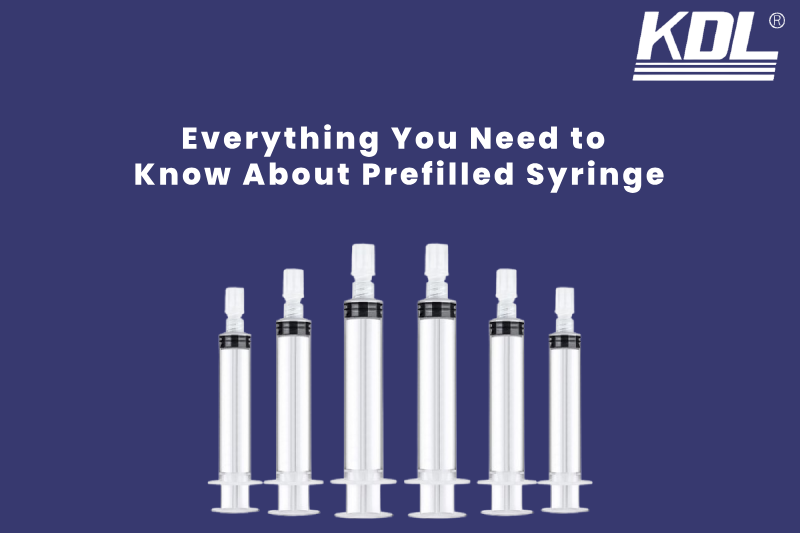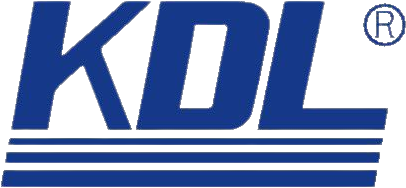
Have you ever received a vaccine or medication at a clinic and noticed how convenient it is when it comes ready to use already filled in a syringe? This is the remarkable efficiency of a prefilled syringe in action. These small, ready-to-use devices are revolutionizing modern healthcare, providing unparalleled safety, accuracy, and convenience for both patients and professionals alike.
This guide will provide you with essential insights into prefilled syringes, covering their functionality, advantages, materials, applications, and the manufacturing process. Don’t miss out on this valuable information!
What Is a Prefilled Syringe?
A prefilled syringe is exactly what it sounds like: it has a certain amount of medicine already in it. Instead of taking medicine out of a bottle or ampoule first, medical staff can just open the clean package, take off the cap, and give the shot.
Vaccines, insulin, biologics, blood thinners, and many other drugs that are injected are all put into prefilled tubes. Since the medicine is already measured out, there is less chance of making mistakes and the product stays clean.
1. Ease of Use
Prefilled syringes are made to make shots quick and easy. It saves time and effort because the medicine doesn’t have to be drawn into the needle by hand. This is very helpful in an emergency or when taking drugs on your own.
2. Improved Safety
Prefilled syringes lower the risk of infection because the medicine is sealed and germ-free. They also make needlestick accidents and cross-contamination less likely than with regular multi-dose bottles.
3. Accurate Dosage
Every syringe is already filled with just the right amount of medication you need. This helps avoid underdosing or overdosing, which is super important for medications that need to be given just right—like insulin or blood thinners.
4. Reduced Waste
Traditional vials usually have some leftover medication that ends up getting tossed out. Prefilled syringes are designed for single use and are optimized for dosing, which helps cut down on waste and saves money in the long run.
5. Better Compliance
For patients who self-inject, using prefilled syringes really helps make sticking to treatment schedules a lot easier. They’re easy to carry around, straightforward to use, and you won’t have to deal with vials or needles on their own anymore.
Not all needles that are already filled are the same. There are different kinds of prefilled needles based on their form, material, and how they work.
Types of Prefilled Syringe
1. Glass Prefilled Syringes
Glass has been used to package medicines for a long time because it is clear and doesn’t react with chemicals.
- Pros: It works well as a shield, doesn’t react badly with most drugs, and can handle being sterilized by heat.
- Cons: It’s heavier, more fragile, and might need a silicone oil covering to keep it from rubbing against things.
2. Plastic Prefilled Syringes
Manufacturers use polymers like polypropylene or cyclic olefin polymer (COP) to create plastic needles.
- Pros: It’s light, won’t break, and works with current biologics.
- Cons: It might not be as clear, and it can be sensitive to some types of cleaning.
3. Disposable Prefilled Syringes
These single-use needles are design for one-time use only. They come cleaned and sealed, enabling immediate use while ensuring cleanliness and safety. This practice has become the standard for selling most vaccines and injectable drugs today.
4. Dual-Chamber Prefilled Syringes
Healthcare providers use dual-chamber syringes for medicines that require mixing just before injection. The drug is in one cylinder, and a solvent is in the other. When it’s time to use them, the two tanks mix together to create a new, active solution.
Prefilled Syringe vs Traditional Syringe
Here’s a quick comparison to highlight the difference:
| Feature | Prefilled Syringe | Traditional Syringe |
|---|---|---|
| Preparation | Ready to use | Requires filling |
| Dosing Accuracy | High | Depends on user |
| Safety | Sterile, sealed | More contamination risk |
| Waste | Minimal | More leftover medicine |
| Speed | Quick administration | Slower setup |
| Cost | Higher unit cost | Lower upfront cost |
While traditional syringes are still common in some settings, prefilled syringes offer clear advantages for safety, efficiency, and convenience.
Components of a Prefilled Syringe
Every prefilled syringe is carefully design for both safety and function. The main parts include:
- Barrel: The tube that holds the medication (made of glass or plastic).
- Plunger: Moves inside the barrel to push the drug out.
- Needle (or Luer tip): Delivers the medication into the patient.
- Stopper: Ensures airtight sealing and smooth movement of the plunger.
- Safety device (optional): Some syringes have built-in safety needles or shields to prevent accidental sticks.
- Label and cap: Provide identification, dosage information, and maintain sterility.
Many areas of medicine utilize prefilled needles. Let’s look at some everyday examples:
Common Applications of Prefilled Syringes
Prefilled syringes are use in many medical fields. Let’s look at some common examples:
Vaccinations
Many vaccines, including flu shots and COVID-19 boosters, now come in preloaded syringes. This design ensures accurate dosing and accelerates the process of mass vaccination.
Diabetes Care
For ease of use and accuracy, insulin users often rely on prefilled insulin pen needles or pens, especially when they are treating themselves at home.
Anticoagulant Medications
Many drugs, such as enoxaparin (Lovenox), come in prefilled needles to ensure accurate dosing and reduce the risk of user error.
Biologics and Biosimilars
Today, biologic drugs like monoclonal antibodies require careful handling and precise dosing, making prefilled syringes the ideal choice for their administration.
Emergency Medications
In an emergency, quick management can save lives. Epinephrine (EpiPen), naloxone, and atropine are all drugs that come in pre-filled needles.
Benefits of Prefilled Syringe for Healthcare Providers
For hospitals and clinics, switching to prefilled syringes brings major operational benefits:
- Faster patient turnaround: No time wasted on drawing doses.
- Fewer mistakes in preparation: each amount is the same.
- Lower chance of contamination: the clean, sealed package keeps the product from coming into touch with the outside world.
- Inventory control: Easy to keep track of how much is being use and cut down on waste.
- Better safety for staff: keeps needle handling and unintentional sticks to a minimum.
Modern Prefilled syringe have safety features
When making prefilled syringes, safety is very important. A lot of them now have built-in tech like
- Needle shields: Cover the needle alone when it’s not in use.
- Break-off tips: Don’t use again.
- Tamper-evident caps: Caps clearly indicate if someone has opened the needle, revealing its usage.
- Low dead space design: Ensures that the device delivers all medication, leaving minimal waste.
Because of these traits, prefilled needles are safer for both patients and healthcare workers.
Challenges in Prefilled Syringe Manufacturing
Despite their many advantages prefilled syringes producing comes with challenges:
- Drug compatibility: Some drugs may react with glass or silicone oil.
- Sterility assurance: Maintaining sterile conditions is crucial throughout the process.
- Cost: Prefilled syringes are more expensive to produce than vials.
- Storage stability: Sensitive biologic drugs require strict temperature control.
- Regulatory standards: Each syringe must meet strict FDA or EMA guidelines.
Choosing the Right Prefilled Syringe Manufacturer
When sourcing or partnering with a prefilled syringe manufacturer, consider the following:
- Regulatory compliance: FDA, ISO, and GMP-certified facilities.
- Material compatibility: Expertise in handling sensitive biologics.
- Customization: Ability to produce different volumes, needle gauges, or safety features.
- Sterility and quality testing: Proven processes to ensure reliability.
- Sustainability initiatives: Eco-friendly materials and waste reduction efforts.
Some top global prefilled syringe manufacturers include KDLNC, BD (Becton Dickinson), Gerresheimer, Schott, and West Pharmaceutical Services but many regional suppliers are also emerging with innovative designs.
Final Thoughts
Having prefilled syringes has made it easier to care for patients, keep them safe, and make things run more smoothly. This ready-to-use delivery method makes it easier to give injections of everything from vaccines to insulin and advanced biologics. It also lowers the risk of error and loss.
More advanced, better, and longer-lasting prefilled needle options will make healthcare even more efficient in the years to come as technology keeps improving.
Understanding how prefilled needles work benefits everyone involved in medicine, including patients, healthcare workers, and pharmacists.
 +86-791-8686-1216
+86-791-8686-1216 

